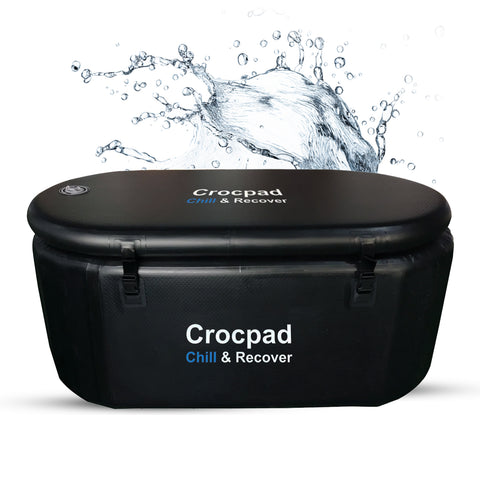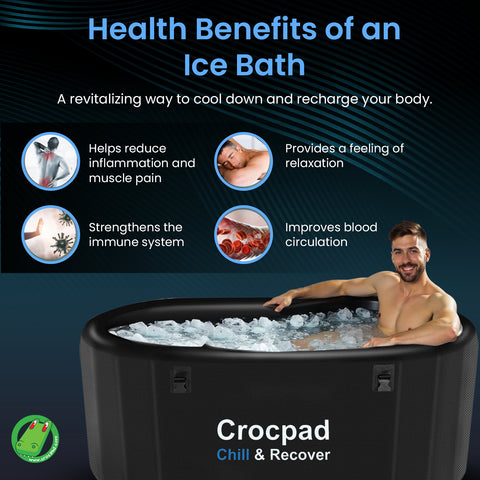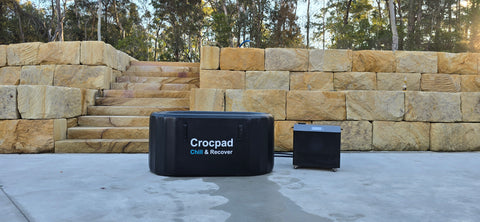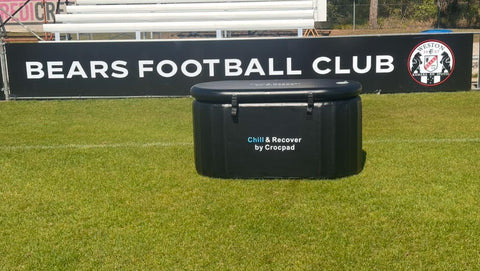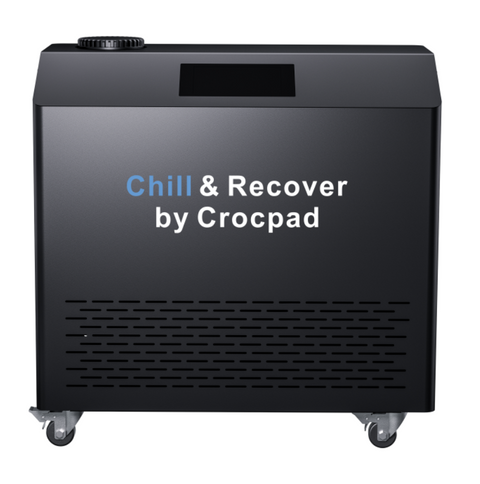Cold Shower or Ice Bath: What Works Best for Recovery?
🚿 The Cold Revolution in Recovery
Whether it’s athletes dunking in icy tubs or wellness enthusiasts turning their morning showers cold, cold exposure therapy has exploded in popularity. Both ice baths and cold showers promise faster muscle recovery, better circulation, and improved mood — but are they equally effective?
Let’s break down what each method does, the science behind them, and which one truly helps your body recover faster.

❄️ 1. What’s the Difference Between an Ice Bath and a Cold Shower?
| Feature | Ice Bath | Cold Shower |
|---|---|---|
| Temperature | 10–15°C (50–59°F) | 15–20°C (59–68°F) |
| Immersion Level | Full body (neck down) | Partial (water hits in streams) |
| Duration | 5–15 minutes | 1–3 minutes |
| Purpose | Deep recovery, inflammation control | Quick refresh, circulation boost |
| Best For | Post-training muscle repair | Daily mental & physical energiser |
An ice bath involves full-body immersion in a tub filled with ice and water — your entire system cools evenly and deeply.
A cold shower, meanwhile, delivers intermittent cooling (water hits, then flows off), giving less uniform exposure but easier access.
Both trigger the body’s natural cold-shock response, yet the effects differ significantly in depth and duration.
💪 2. The Science of Cold Exposure
Cold therapy works by constricting blood vessels, which reduces inflammation and swelling after intense exercise. Once you warm up again, blood vessels expand, flushing out metabolic waste and replenishing oxygen in the muscles.
Key physiological benefits of cold exposure:
-
Reduced muscle soreness (DOMS) after high-intensity training
-
Improved circulation and recovery rate
-
Enhanced alertness due to adrenaline and endorphin release
-
Decreased inflammation and joint pain
But how much benefit you get depends on how deeply and consistently you expose your body to the cold — and that’s where the ice bath has the upper hand.
🧊 3. Why Ice Baths Deliver a Deeper Recovery
When you submerge your body into an ice bath, the cooling is complete and sustained.
Cold water evenly surrounds your muscles, lowering tissue temperature and reducing micro-inflammation across the body — not just where the water hits.
Benefits of Ice Baths:
-
Deeper tissue cooling for faster muscle recovery
-
Reduced swelling and post-exercise fatigue
-
Calmer nervous system and improved sleep after sessions
-
Triggers dopamine release, enhancing mood for hours
Research shows that cold-water immersion (10–15 °C for 10–15 min) after workouts significantly reduces soreness and muscle damage markers in elite athletes.
It’s why professional sports teams, gyms, and wellness centers use dedicated ice bath setups rather than cold showers for true recovery.
✅ Best choice for: athletes, weight trainers, endurance enthusiasts, and anyone doing repetitive high-load exercise.
🚿 4. The Benefits (and Limits) of Cold Showers
Cold showers are the gateway to cold therapy. They’re quick, accessible, and a great way to wake up your body and mind.
Benefits of Cold Showers:
-
Boost alertness and energy instantly
-
Strengthen the immune response (regular exposure improves circulation)
-
Can improve mental resilience through daily discipline
-
Easier to maintain as a morning routine
However, because cold showers don’t fully immerse the body, they deliver less consistent cooling. The temperature is also higher than a true ice bath, limiting the depth of recovery benefits.
🚫 Cold showers may help refresh you, but they’re not enough for deep muscle recovery after heavy workouts.
✅ Best choice for: everyday wellness, morning energy boosts, and mental resilience training.
🧬 5. Which One Works Better for Recovery?
Let’s settle it.
| Goal | Winner | Why |
|---|---|---|
| Post-workout recovery | 🥇 Ice Bath | Deep tissue cooling, inflammation reduction |
| Quick daily refresh | 🚿 Cold Shower | Convenient, accessible, fast energy |
| Mental resilience training | 🤝 Both | Each builds tolerance and focus differently |
| Reducing soreness & swelling | 🧊 Ice Bath | Proven effectiveness in multiple studies |
| Boosting mood & energy | 🚿 Cold Shower | Great short-term endorphin boost |
Verdict:
👉 If you want complete recovery after workouts — go with an ice bath.
👉 If you’re after daily wellness and energy — cold showers are your friend.
For serious athletes or anyone doing consistent training, combining both can be ideal:
cold showers daily + ice baths 2–3 times a week for peak recovery.
🧘 6. How to Use Each Safely
For Ice Baths:
-
Keep temperature around 10–15 °C
-
Stay in for no longer than 10–15 minutes
-
Always warm up gradually after (don’t jump into a hot shower immediately)
-
Avoid if you have heart or circulation issues — consult a doctor first
For Cold Showers:
-
Start with 30–60 seconds of cold water at the end of your normal shower
-
Gradually increase duration and reduce temperature over time
-
Focus on calm, slow breathing to reduce the cold shock
Remember: consistency matters more than extremity. Cold exposure should refresh and restore you — not shock your body into distress.
🇦🇺 7. The Australian Recovery Trend
Across Australia, cold therapy is becoming a ritual — from pro teams to wellness enthusiasts.
Gyms, physiotherapy clinics, and recovery centers now integrate Crocpad Ice Baths as part of regular recovery sessions.
Whether it’s a Portable Ice Pod for home use or a Boreon Pro Chiller for precise temperature control, Australians are finding that real recovery needs real cold — beyond what a shower can offer.
💡 8. Final Thoughts: Choose Your Chill
Both ice baths and cold showers have their place.
But if your goal is faster recovery, less soreness, and better performance — an ice bath is scientifically stronger.
So, start small, stay consistent, and upgrade when you’re ready.
Your muscles — and your mind — will thank you. 🧠❄️💪



